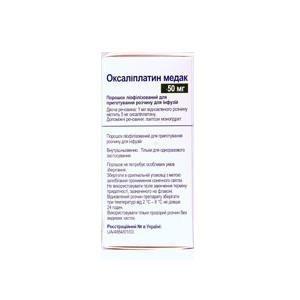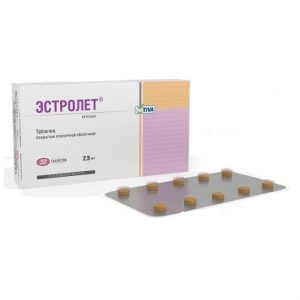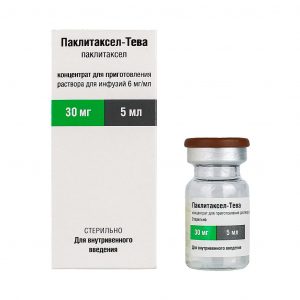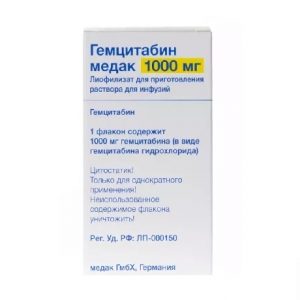Description
Pharmacological action
Antitumor agent. It is a selective non-steroidal aromatase inhibitor. In postmenopausal women, estradiol is mainly formed from estrone, which is produced in peripheral tissues by conversion from androstenedione (with the participation of the aromatase enzyme). A decrease in circulating estradiol has a therapeutic effect in women with breast cancer. In postmenopausal women, anastrozole in a daily dose of 1 mg causes a decrease in estradiol levels by 80%. Anastrozole does not have progestogen, androgenic and estrogenic activity in therapeutic doses, does not affect the secretion of cortisol and aldosterone.
Pharmacokinetics
After oral administration, anastrozole is rapidly absorbed from the digestive tract. Cmax in plasma is reached within 2 hours (on an empty stomach). Food slightly reduces the speed, but not the degree of absorption. Plasma protein binding is 40%. There is no information on cumulation.
Anastrozole metabolism is carried out by N-dealkylation, hydroxylation and glucuronidation. Triazole, a major metabolite found in plasma and urine, does not inhibit aromatase.
Anastrozole and its metabolites are excreted mainly in the urine (less than 10% unchanged), within 72 hours after a single dose. T1 / 2 from plasma – 40-50 h.
The clearance of anastrozole after oral administration in volunteers with stabilized cirrhosis of the liver or impaired renal function does not differ from the clearance determined in healthy volunteers.
The pharmacokinetics of anastrozole in postmenopausal women does not change.
Indications
Postmenopausal breast cancer.
Contraindications
Premenopausal period, severe renal failure (CC less than 20 ml / min), moderate and severe liver failure, pregnancy, lactation, childhood, hypersensitivity to anastrozole.
Special instructions
In case of uncertainty in the hormonal status of the patient, the state of menopause must be confirmed by additional biochemical studies.
The safety of anastrozole in patients with moderate hepatic impairment has not been established.
Anastrozole should not be used concurrently with estrogens.
Influence on the ability to drive vehicles and control mechanisms
During the treatment period, work that does not require a high concentration of attention and quick psychomotor reactions should not be performed.
Composition
Film-coated tablets are white, round, biconvex, with an engraving ANA 1 on one side of the fractured tablet – white or almost white.
1 tab.
anastrozole 1 mg
Excipients: lactose monohydrate, povidone, sodium carboxymethyl starch, magnesium stearate.
Film coat: white opadra (macrogol 400, hypromellose, titanium dioxide).
Dosage and administration
Inside – 1 mg 1 time / day.
Side effects
From the endocrine system: hot flashes, vaginal dryness and thinning of the hair.
From the digestive system: anorexia, nausea, vomiting, diarrhea. In patients with advanced breast cancer, in most cases with liver metastases, an increase in GGT levels was noted, less often – alkaline phosphatase.
From the side of the central nervous system: asthenia, drowsiness, headache.
Metabolism: A slight increase in total cholesterol.
Allergic reactions: skin rash.
active substance
Anastrozole
Terms of delivery from
pharmacies Prescription
dosage form
tablets
Appointment
Adult prescription
Indications
Onkolohycheskye disease




